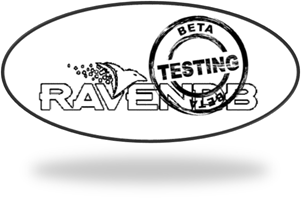Let us start with the biggest news. We are offering RavenDB 4.0 FREE for production usage for single node deployments.
In addition to that, the license for the RavenDB Client APIs is going to change from AGPL to MIT. We currently have clients for .NET, JVM, Python and Node.JS, with Go and Ruby clients coming (hopefully by the time we hit RC). All of which will be available under the MIT license. The server license will remain AGPL / Commercial, with a Community deployment option that will come free of charge. The Community Edition is fully functional on a single node.
You can use this edition to deploy production systems without needing to purchase a license, completely FREE and unencumbered.
We have also decided to do somewhat of a shakeup in the way we split features among editions, primarily by moving features down the slide, so features that used to be Enterprise only are now more widely available. The commercial edition will be available in either Professional and Enterprise editions. For our current subscribers, we are very happy that you’ve been with us for all this time, and we want to assure you that as long as your subscription will be valid, the pricing for it will stay as is.
Both Professional and Enterprise Editions are going to offer clustering, offsite backups, replication and ETL processes to SQL and RavenDB databases. The Enterprise edition also offers full database encryption, automatic division of work between the nodes in the cluster (including failover & automatic recovery), snapshot backups and SNMP integration among other things. Commercial support (including 24x7 production) will be available for Professional and Enterprise Editions.
Since I’m pretty sure that the thing that you are most interested in is pricing information and feature matrix, so here is the information in an easy to digest form.
|
Community |
Professional |
Enterprise |
|
|
FREE |
$749 per core* |
$1,319 per core* |
|
|
Cores |
Up to 3 |
Up to 40 |
Unlimited |
|
Memory |
Up to 6 GB |
Up to 240GB |
Unlimited |
|
Cluster Size |
Up to 3 nodes |
Up to 5 |
Unlimited |
|
Commercial |
Community only |
Available |
Available |
|
Versioning |
Yes |
Yes |
Yes |
|
Backups |
Local full backups |
Full & incremental |
Full & incremental |
|
Full database snapshot1 |
No |
No |
Yes |
|
Tasks distribution2 (backups, ETL, subscriptions) |
No |
Yes |
Yes |
|
Highly available tasks3 |
No |
No |
Yes |
|
Highly available databases & |
No |
Yes |
Yes |
|
ETL Support |
No |
SQL & RavenDB |
SQL & RavenDB |
|
Full database encryption |
No |
No |
Yes |
|
Monitoring |
No |
Yes |
Yes, SNMP |
|
Client authentication via |
No |
No |
Yes |
* To save you the math, a 6 cores server with Professional edition will be about 4,494$ and Enterprise edition will be about 7,914$.
- Snapshots capture the database state and allow to reduce restore time on large databases, at the expense of disk space. Snapshots can work together with incremental backup to get point in time recovery.
- Tasks (such as backups, ETL processes, subscriptions, updating new nodes, etc) are assigned to specific node dynamically, to spread load fairly in the cluster.
- When a node responsible for a task goes down, the cluster will automatically re-assign that task without interruption in service.
Task distribution and failover is best explained via a concrete example. We have a database with 3 nodes, and we define an ETL process to send some of the data to a reporting database. That work will be dynamically assigned to a node in the cluster, and balanced with all other work that the cluster need to do. For Enterprise Edition, if the node that was assigned that task failed, the cluster will automatically transfer all such tasks to a new node until the node will recover.
The new model comes with significant performance boost, all the features that I mentioned earlier and multi-platform support. But we are not forgetting about newcomers, small enterprises and individual clients. For those we have introduced a Community version, a completely FREE license that should suit their needs.
Again, for all existing subscribers, we assure you that while your subscription is valid, its pricing will stay as is. In fact, given that we will grandfather all existing subscriptions at the current price point, and you can purchase a subscription now, before the official release of 4.0, you have a nice arbitrage option available now.
The beta release represent over two years of work by the RavenDB Core Team to bring you top of the line database that is fast, safe and easy to use. It is chockfull of features, to the point where I don’t know where to start blogging about some of the cool stuff that we do (don’t worry, those posts are coming).











